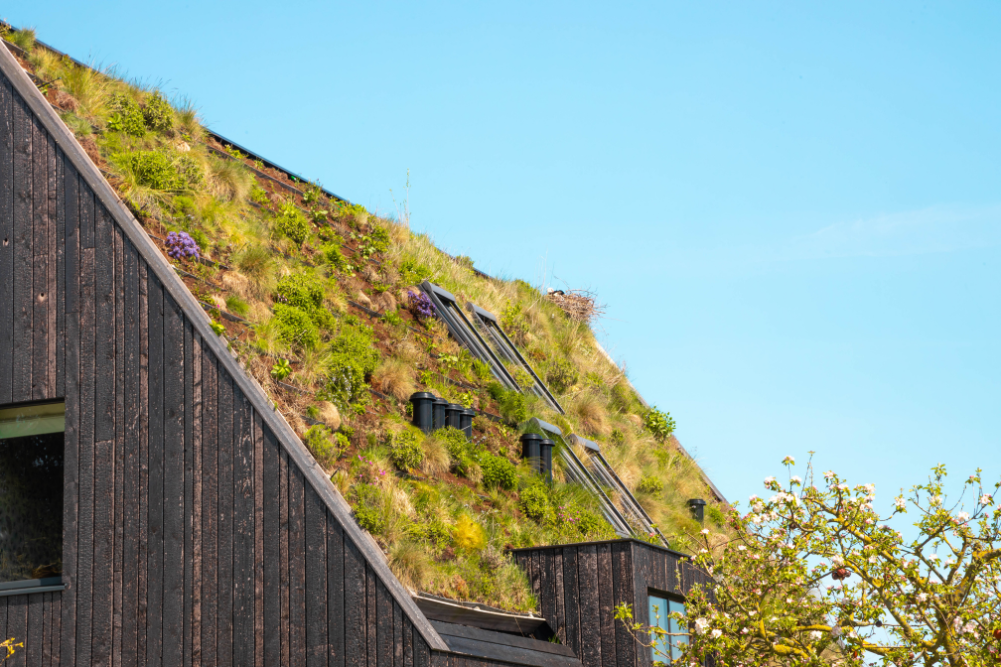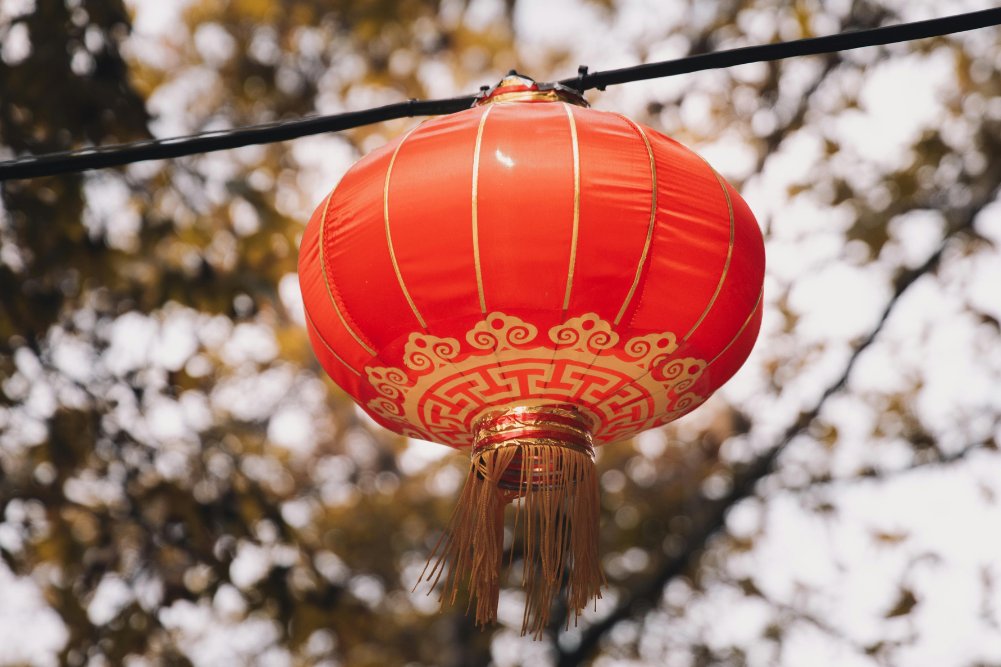Rethinking rainwater
Explore how sponge cities, rain gardens and depaving help manage rainwater and restore nature to our increasingly urban spaces.
Many years ago, Joni Mitchell sang about developers paving paradise and putting up a parking lot. Today, it is becoming increasingly common to see paved or concreted surfaces returned to nature, and this is not just as a concession to the hippy generation.
In built-up areas, impermeable hard surfaces have become ubiquitous. There was a logic behind this. Cities and towns were once unsanitary places with an excess of mud and filth, and after sewers came into use, the goal for managing excess water was to simply dispose of it. This arrangement worked relatively well until fairly recently. Now climate change is raising ocean temperatures, causing the air above to hold more moisture, which results in storms over land that are increasingly frequent and more intense. Surface water from flash flooding is liable to temporarily accumulate faster than it can drain away. The traditional drainage model is no longer working.
Current urban water design is shifting away from hard engineering towards permeability, with elements such as bioswales, rain gardens and green roofs increasingly commonplace as means for rainwater to percolate, reducing stormwater volumes. This fulfils a number of functions, the most important of which is to ameliorate the severity of floods. Groundwater depletion is a global issue, and allowing rainwater to infiltrate can recharge aquifers. Pollutants such as chemicals and oils that would otherwise be released into the environment are often absorbed by bacteria and fungi in the soil or filtering medium.
A “green and blue” nature- and water-focused urban infrastructure model is often referred to as the sponge city, and extends to parks, lakes, wetlands, woodlands and large peri-urban tree plantings such as the Orbital Forest around Tirana, the capital of Albania.
The origin of sponge cities
Kongjian Yu founded an innovative Chinese landscape architecture company called Turenscape in 1998. In the 1990s, he had studied overseas and, after returning later in the decade, he was disappointed to see the country embracing the Western concreteoriented paradigm when it came to infrastructure. Yu’s early speciality was to reclaim disused industrial sites and return them to nature.
He coined the term “sponge cities” in a 2003 publication and continued working out of the limelight for a decade until 2013, when President Xi Jinping adopted Yu’s model, launching China’s Sponge Cities Program. During 2015 and 2016, 30 pilot sponge cities were selected for projects. Today, Turenscape is behind more than 1000 sponge city initiatives in over 250 Chinese cities, plus others in France, Indonesia, Russia, Singapore, Thailand and the US.
China’s ambitious 2030 target is for 80 per cent of urban built-up areas to have sponge city adaptations, and for them to recycle at least 70 per cent of rainwater. Meanwhile, sponge city features were, perhaps unfairly, criticised because in 2023 they were no match for the severe weather. Beijing experienced its heaviest rain in at least 140 years, and flooding was widespread.
Innovative water design
One focal point for Turenscape’s activities has been China’s southern island of Hainan. With a monsoon climate, it can experience severe storms and flooding. The city of Sanya has converted a former landfill site adjoining a river into a mangrove park featuring a gentle slope with terraces and bioswales that cause water in the landscape to be slowed down and absorbed. It also features interlocking fingers of land and water channels.
Another Turenscape project is Benjakitti Forest Park in Bangkok, a city that has its own flood challenges. Similar to Sanya, this involves some constructed wetlands on a former industrial site. It features four lakes containing numerous grasstopped mound islands created using concrete that was recycled from the redevelopment. These mounds filter and clean water and also provide habitat for wildlife. Public access is via raised walkways.
Rotterdam in the Netherlands is redesigning a square with part-time water-retention ponds. Watersquare Benthemplein contains three stepped, sunken basins that double up as water storage areas in the wetter months. Two basins allow the water to seep into the groundwater, while a third, an overflow that only receives water after prolonged rain, releases its stormwater into the sewers.
In addition to other water-collecting features, Los Angeles County is pioneering large basins called “spreading grounds”, located in areas that are gravelly, rocky or sandy, allowing water to percolate. Currently 27 in number, they are bordered by embankments and can be several hectares in size or larger. The Tujunga Spreading Grounds in the suburb of Sun Valley occupy a vast area of 0.6 square kilometres.
Depaving
Depave is the name of a hands-on grassroots group that began in 2008 in Portland, Oregon, a US city with a reputation for being ultra-progressive. Its mission is, with the blessing of the owners, to replace hard surface areas such as unused edges of car parks with gardens. It has positioned itself as an anti-racist environmental justice organisation, engaging with the issue of urban heat islands that are worse in poorer neighbourhoods with a higher African-American population. One important element is a commitment by locals to manage and maintain the sites into the future.
The group has depaved more than 33,000 square metres, which results in 24.5 million gallons of water being diverted from storm drains every year. The scale of what such a community-based endeavour can achieve may seem insignificant in proportion to the scale of the challenge. Yet its most powerful effects may be in shifting attitudes, encouraging replication, and even leveraging action at a city-wide local government level.
Today, Depave is in touch with a network of similar groups, including Green Venture in Hamilton, Ontario, Canada, which operates along very similar lines. These ideas are receiving support from some local governments, such as the Belgian city of Leuven, which is focusing its depaving activities in the suburban district of Spaanse Kroon. The municipal authorities operate a small truck called a “tile taxi” that collects pavers and cobbles for free so that they can be reused elsewhere.
In Australia, Thami Croeser and his colleagues at RMIT Centre for Urban Research have looked into broad-scale depaving of Melbourne’s parking spaces, creating miniature gardens in their place. In a 2022 study, they simulated a number of scenarios, which included replacing up to half of the City of Melbourne’s 23,000 open-air parking spaces, yielding an additional 50-60 hectares of green space.
Porous paving
Increasingly, ways are being found to combine permeability with hard surfaces, and porous paving is becoming more widely used. This can involve impermeable pavers, with gaps between them for the water to infiltrate. Sometimes such pavers are alternated with grass. Otherwise, paver products may have a porous design that allows water infiltration via the make-up of the material itself, which can be asphalt, or concrete grid, among other options. To facilitate infiltration, multiple permeable layers are usually involved.
New York has a recent history of flooding affecting streets, basement apartments and subways. Rockaway is a peninsula on the edge of New York City that was badly affected by Hurricane Sandy in 2012. The permeable concrete installed there was the first of its kind in the city. Currently, 11km of permeable pavement are being installed in Brooklyn, on the sides of roads, along kerb lines.
For a householder interested in trying out porous paving, a range of products is available in Australia and New Zealand. It is more expensive than the standard option due to the extra work involved in preparing the site, but this may be offset by avoiding issues with water pooling or running off.
Rain gardens and bioswales
What looks at first sight like a standard garden bed can hide a more sophisticated design tailored for capturing surface water. A rain garden is fairly small in size, often located below its surroundings, and often has a depression in the middle where rain collects. It generally possesses a minimum of two layers – a permeable soil mix topped by gravel, rocks or pebbles. Mulch is not recommended because it can be carried away and clog up stormwater drains. These gardens were first developed in the 1990 in the US state of Maryland.
A good location is close to where pollutants enter the waterways. If designed to collect water from an adjacent road, preferably it will be surrounded by a kerb-like border to prevent car tyres from driving over, compressing and damaging the garden. Another well-chosen site is in a suburban garden, where it can receive the stormwater from a downpipe.
Australia is seeing increasing numbers of rain gardens, 240 of which have been created in central Sydney. For each city’s climate there is a different list of recommended species. Because Australia is prone to dry conditions, self-watering wicking systems can be used for irrigation to prevent rain gardens from drying out. In 2022, the New Zealand city of Wellington installed its first pair of rain gardens.
Bioswales are similar, but on a larger scale, and are at least 30m in length. When establishing them, it is recommended to obtain advice from an engineer or landscape architect. Usually, they have gentle opposing slopes that descend to a dip in the middle that is suited to plants that can handle being flooded. They can be found in housing subdivisions, along roadsides that have no pedestrian traffic and on the edges of parking lots.
Green living roofs
Overlaying flat or gently sloping roofs with a green roof (also known as a living roof) fulfills a range of functions, including improved aesthetics, more biodiversity, better air quality and thermal and sound insulation. Another is stormwater diversion, as a green roof will soak up plenty of water. The range of plants used can consist of mosses, shrubs, grasses, ferns, herbs, wildflowers or most commonly sedum. This low-growing succulent has the advantages of being drought-tolerant so that it requires little watering. A green roof will generally have a soil or growing medium layer, below it a filter and drainage layer and, underneath, a root barrier and a waterproof membrane.
New buildings can be designed with a green roof in mind. For existing structures, retrofits need to be carried out, with reinforcement required to support the weight of wet soil and other materials. In Australia, for example, a green roof can cost 50-100 per cent more than its traditional equivalent, but this is offset by the improved insulation properties, plus the fact that, according to supporters, a green roof tends to double or even triple the roof’s life expectancy.
Europe is currently leading the world in green roof installations. Worldwide, the spread of these roofs is being accelerated by regulations in the form of mandates (eg in Basel, Linz, Toronto, San Francisco, Tokyo and Seoul), and financial incentives (Amsterdam and Rotterdam). Sydney and Melbourne encourage them, while New Zealand is perhaps a little slow in pursuing this roofing option. Utrecht in the Netherlands and Leicester in the UK have both installed green roofs on top of bus shelters.
A recently coined concept is the “blue-green” roof, which indicates a green roof with water harvesting, retention and re-use capabilities. Such a sophisticated system requires a greater level of expertise than a more basic green roof and more structural reinforcement. City authorities in Rotterdam pay up to US$530 to the building owner for every cubic metre of roof water harvested.
A range of benefits
In addition to diverting stormwater, sponge city projects offer a range of other diverse benefits to the community and the environment:
- In the case of new development, curbing the use of concrete and other hard surfaces with a significant embodied energy in favour of nature.
- The carbon sequestration effects of plantings.
- Adaptation to climate change, hot temperatures and drought, all simultaneously.
- Reducing the area of hard surface and replacing it with vegetation also reduces the heat island effect, minimising the incidence of heat-related health difficulties as the planet warms.
- Capturing pollutants before they reach a waterway.
- Bringing nature into urban areas, which is liable to result in improved physical and mental health.
- Aesthetically pleasing qualities associated with nature, which encourages people to exercise more.
- Plantings of native species support biodiversity.
Rethinking concrete and embracing nature-based water solutions allows for both people and nature to thrive.








